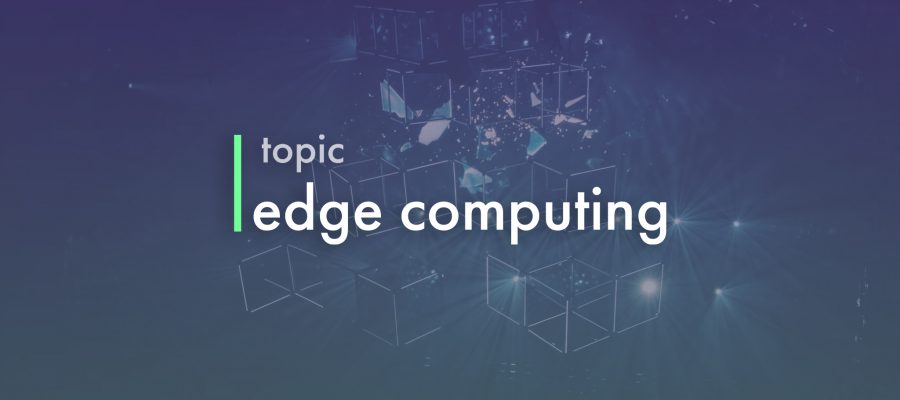Edge computing is a distributed computing paradigm which brings computation and data storage closer to the location where it is needed, to improve response times and save bandwidth. The origins of edge computing lie in content delivery networks that were created in the late 1990s to serve web and video content from edge servers that were deployed close to users. In the early 2000s, these networks evolved to host applications and application components at the edge servers, resulting in the first commercial edge computing services that hosted applications such as dealer locators, shopping carts, real-time data aggregators, and ad insertion engines.  Modern edge computing significantly extends this approach through virtualization technology that make it easier to deploy and run a wider range of applications on the edge servers.
The increase of IoT devices at the edge of the network is producing a massive amount of data to be computed to data centers, pushing network bandwidth requirements to the limit. Despite the improvements of network technology, data centers cannot guarantee acceptable transfer rates and response times, which could be a critical requirement for many applications. Furthermore, devices at the edge constantly consume data coming from the cloud, forcing companies to build content delivery networks to decentralize data and service provisioning, leveraging physical proximity to the end user. In a similar way, the aim of Edge Computing is to move the computation away from data centers towards the edge of the network, exploiting smart objects, mobile phones or network gateways to perform tasks and provide services on behalf of the cloud. By moving services to the edge, it is possible to provide content caching, service delivery, storage and IoT management resulting in better response times and transfer rates. At the same time, distributing the logic in different network nodes introduces new issues and challenges.
Privacy and security:
The distributed nature of this paradigm introduces a shift in security schemes used in cloud computing. Not only data should be encrypted, but different encryption mechanism should be adopted, since data may transit between different distributed nodes connected through the internet before eventually reaching the cloud. Edge nodes may also be resource constrained devices, limiting the choice in terms of security methods. Moreover, a shift from centralized top-down infrastructure to a decentralized trust model is required. On the other hand, by keeping data at the edge it is possible to shift ownership of collected data from service providers to end-users.
Scalability:
Scalability in a distributed network must face different issues. First, it must take into account the heterogeneity of the devices, having different performance and energy constraints, the highly dynamic condition and the reliability of the connections, compared to more robust infrastructure of cloud data centers. Moreover, security requirements may introduce further latency in the communication between nodes, which may slow down the scaling process.
Reliability:
Management of failovers is crucial in order to maintain a service alive. If a single node goes down and is unreachable, users should still be able to access a service without interruptions. Moreover, edge computing systems must provide actions to recover from a failure and alerting the user about the incident. To this aim, each device must maintain the network topology of the entire distributed system, so that detection of errors and recovery become easily applicable. Other factors that may influence this aspect are the connection technology in use, which may provide different levels of reliability, and the accuracy of the data produced at the edge that could be unreliable due to particular environment conditions.
Edge application services reduce the volumes of data that must be moved, the consequent traffic, and the distance that data must travel. That provides lower latency and reduces transmission costs. Computation offloading for real-time applications, such as facial recognition algorithms, showed considerable improvements in response times as demonstrated in early research. Further research showed that using resource-rich machines called cloudlets near mobile users, offering services typically found in the cloud, provided improvements in execution time when some of the tasks are offloaded to the edge node. On the other hand, offloading every task may result in a slowdown due to transfer times between device and nodes, so depending on the workload an optimal configuration can be defined.
Another use of the architecture is cloud gaming, where some aspects of a game could run in the cloud, while the rendered video is transferred to lightweight clients such as mobile, VR glasses, etc. Such type of streaming is also known as pixel streaming. Conventional cloud games may suffer from high latency and insufficient bandwidth, since the amount of data transferred is huge due to the high resolutions required by some services.
Other notable applications include connected, autonomous cars, smart cities, Industry 4.0 (smart industry) and home automation systems.
The above is a brief about Edge Computing. Watch this space for more updates on the latest trends in Technology
